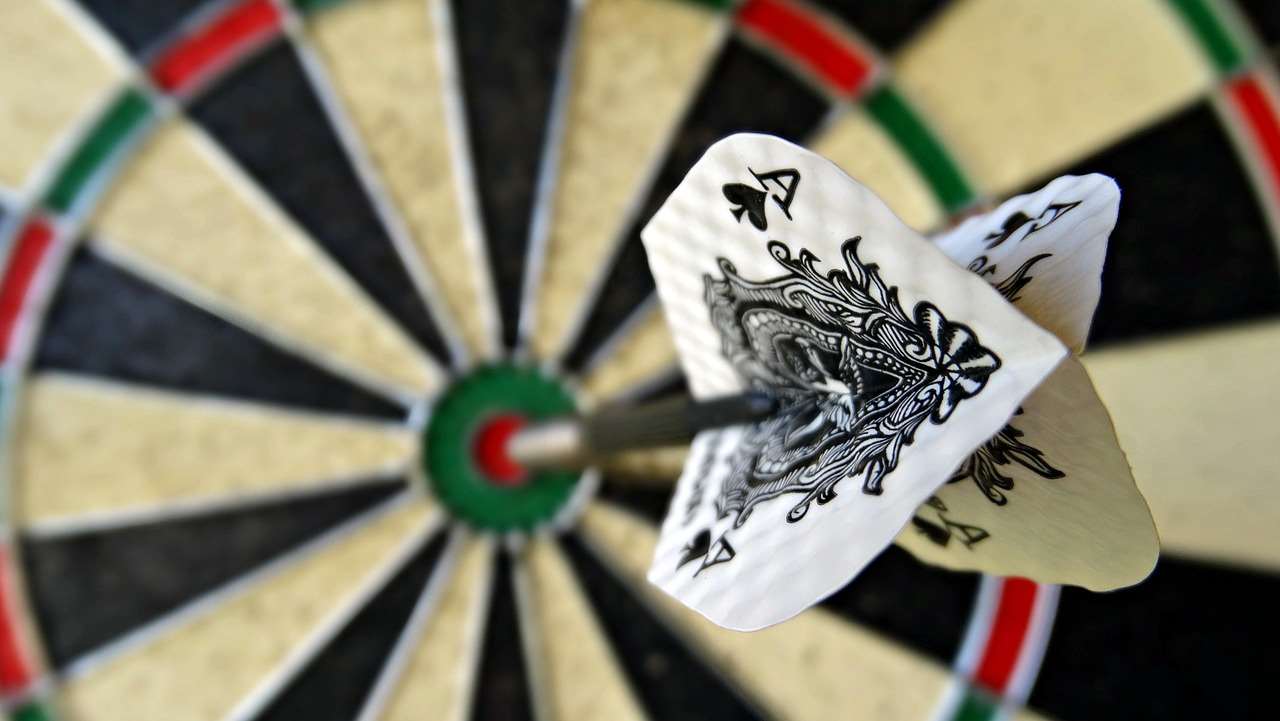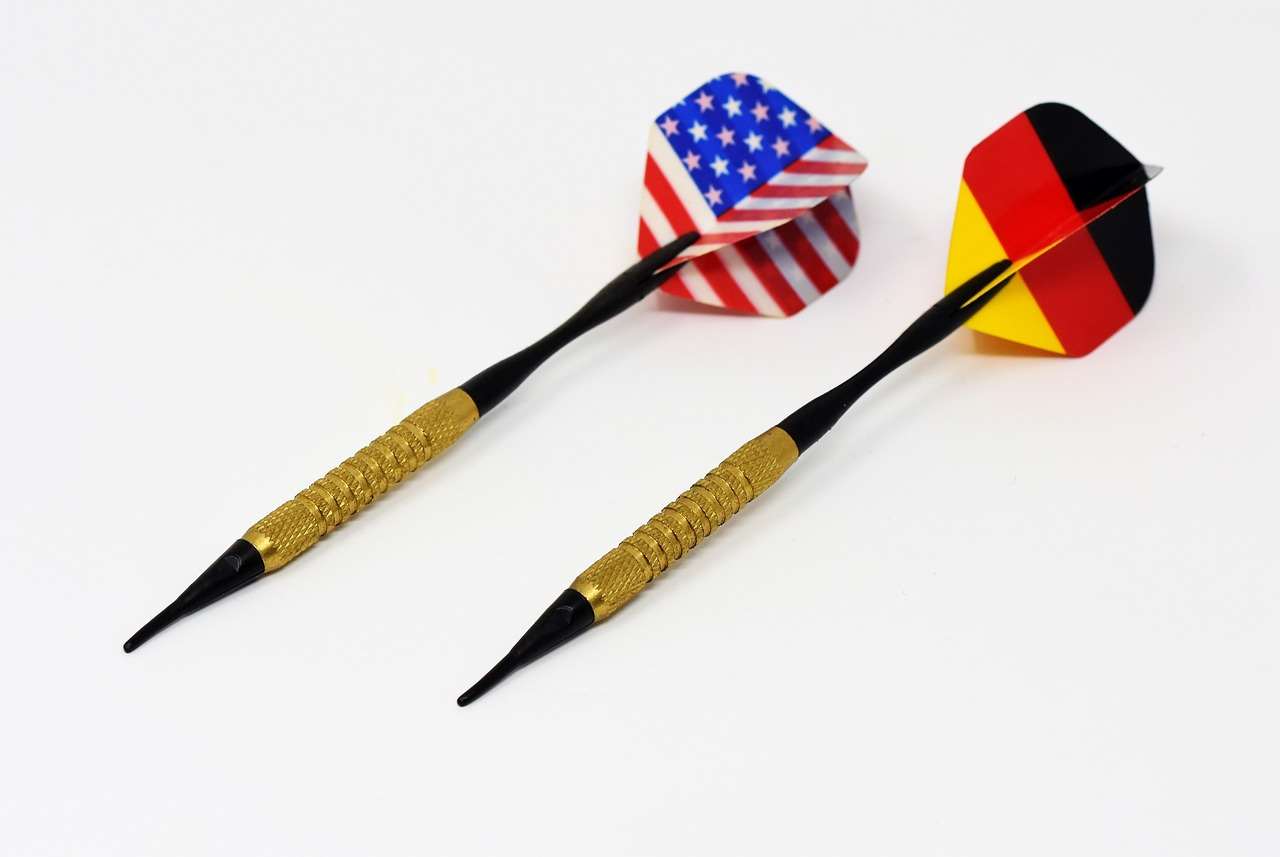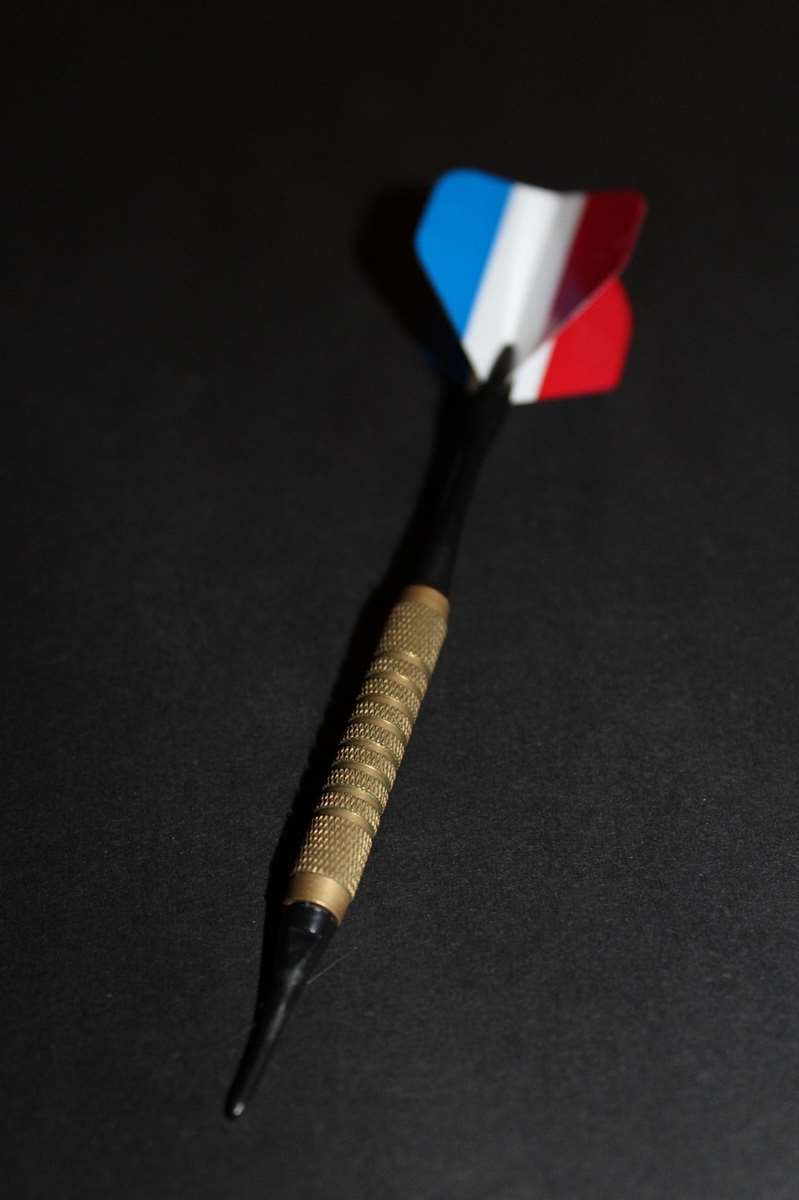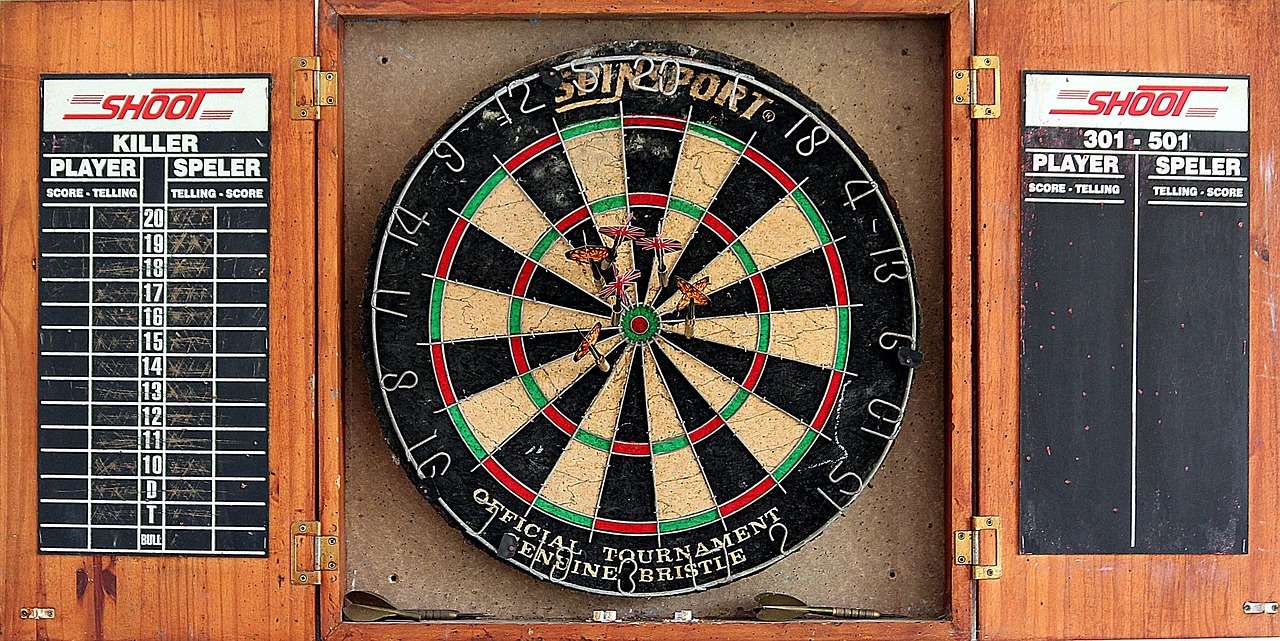When deciding between **brass vs tungsten darts**, the key difference lies in density; tungsten allows for a slimmer barrel while maintaining weight, leading to tighter groupings and higher scores. This article delves into the pros and cons of each material, exploring their impact on performance, durability, and cost, helping you choose the best darts for your skill level and budget.
⚠️ Still Using Pen & Paper (or a Chalkboard)?! ⚠️
Step into the future! The Dart Counter App handles all the scoring, suggests checkouts, and tracks your stats automatically. It's easier than you think!
Try the Smart Dart Counter App FREE!Ready for an upgrade? Click above!
Understanding the Basics: Brass vs Tungsten Darts
Choosing the right darts can significantly impact your game. While various materials are available, **brass** and **tungsten** are the most common, and understanding the differences between **brass vs tungsten darts** is crucial. Let’s break down each material.
What are Brass Darts?
**Brass darts** are typically the entry-level option. Brass is a relatively soft and inexpensive metal, making it a popular choice for beginners or casual players. This affordability makes them a good starting point to learn if you enjoy the sport, before investing in more expensive **tungsten darts**.
What are Tungsten Darts?
**Tungsten darts**, on the other hand, are made from a denser alloy, typically containing tungsten mixed with nickel and other metals. This high density allows for a significantly slimmer barrel compared to brass, for the same weight. This slimness can greatly enhance your dart throwing ability.

Key Differences Between Brass and Tungsten Darts
Several factors differentiate these two materials. Examining these differences will help you better understand the impact on your overall dart game.
Density and Barrel Size
The most significant difference is density. **Tungsten** is much denser than **brass**. A tungsten dart with 80% tungsten will allow for a far slimmer barrel. Because tungsten is denser, you can achieve the same weight in a smaller package. This has a significant impact on grouping.
Grouping Potential
The slimmer barrel of **tungsten darts** allows for tighter groupings on the dartboard. You can fit more darts into a smaller area. With **brass darts**, the thicker barrel can obstruct your throw, making it harder to achieve close groupings. This potential for tighter groupings is a huge advantage for more advanced players.
Durability and Longevity
**Tungsten darts** are generally more durable than **brass darts**. Brass is a softer metal, so **brass darts** are more prone to dings, dents, and wear over time. This can affect their balance and grip. **Tungsten darts**, due to their higher density and the addition of other strong metals in the alloy, are more resistant to damage and will maintain their shape and performance for longer. You can also learn more about Choose Right Dart Material.
Grip and Feel
The grip on a dart barrel is essential for consistent throws. Both **brass** and **tungsten darts** can be manufactured with various grip patterns, such as knurling, rings, or scallops. However, the slimmer profile of **tungsten darts** often allows for more intricate and aggressive grip designs, offering a more secure and controlled feel.

Cost Comparison: Brass vs Tungsten Darts
As expected, **brass darts** are significantly more affordable than **tungsten darts**. This is primarily due to the lower cost of the raw material. A set of quality **tungsten darts** can be a substantial investment, especially those with a high tungsten percentage. While **brass darts** may seem attractive due to their price, consider the long-term value and performance benefits of **tungsten darts** before making a decision. Are **tungsten darts** worth the investment? For serious players, the answer is typically yes. To better understand Best Material For Darts you may want to investigate other options too.
Choosing the Right Darts for Your Skill Level
The best dart material for you will depend on several factors, including your skill level, budget, and playing style. It’s not simply a case of saying which is best, as the right dart is one that works best for *you*.
Beginners: Starting with Brass
For absolute beginners, **brass darts** are a great starting point. They are inexpensive, allowing you to experiment with different weights and barrel shapes without breaking the bank. You can get a feel for the game and develop your throwing technique before upgrading to more expensive **tungsten darts**. They are a good starting point before considering Beginner Dart Barrel Materials.
Intermediate Players: Transitioning to Tungsten
As you progress and become more serious about your game, transitioning to **tungsten darts** is highly recommended. The slimmer barrel and tighter groupings will allow you to improve your accuracy and consistency. Start with a lower **tungsten** percentage (e.g., 80%) to ease the transition and gradually move to higher percentages as your skill improves. You will likely see an immediate improvement in your score!
Advanced Players: Optimizing with High Tungsten Percentage
Advanced players typically prefer **tungsten darts** with a high **tungsten** percentage (90% or higher). These darts offer the slimmest profile and the most precise control, allowing for maximum scoring potential. Experiment with different weights, grip styles, and balance points to find the perfect set of **tungsten darts** that suits your individual throwing style. For more information, see Why Choose Tungsten Darts.
The Impact of Tungsten Percentage
The **tungsten percentage** in a dart refers to the amount of **tungsten** used in the alloy. Darts are rarely made of 100% tungsten, as this would make them too brittle. Instead, **tungsten** is combined with other metals like nickel to create a durable and workable alloy. The higher the **tungsten percentage**, the denser the dart, and therefore the slimmer the barrel can be. Be sure to carefully research the details of Tungsten Percentage Explained before settling on a **tungsten dart**.
80% Tungsten Darts
80% **tungsten darts** are a popular choice for intermediate players. They offer a good balance of performance and affordability.
90% Tungsten Darts
90% **tungsten darts** are a step up in terms of density and slimness. They provide more precise control and are favored by more advanced players.
95% Tungsten Darts (and Higher)
95% **tungsten darts** and higher represent the pinnacle of dart technology. These darts offer the slimmest barrels and the most precise control, but they also come at a premium price. They are best suited for serious players who demand the best possible performance.

Other Factors to Consider When Choosing Darts
While the material of the dart barrel is a crucial factor, there are other aspects to consider when selecting the right darts for your game.
Dart Weight
Dart weight is a personal preference. Most darts range from 18 to 30 grams. Experiment with different weights to see what feels most comfortable and natural in your hand. Heavier darts may be more stable, while lighter darts may offer more finesse. Finding the right balance is key.
Dart Length and Shape
Dart length and shape can also affect your throw. Shorter darts may be easier to control, while longer darts may provide more stability. Different barrel shapes, such as torpedo, straight, or bomb, will also influence the dart’s flight and feel. Again, experimentation is key to finding what works best for you.
Flights and Shafts
The flights and shafts of your darts also play a significant role in their performance. Flights affect the dart’s stability and trajectory, while shafts influence the dart’s balance and grip. Experiment with different shapes, sizes, and materials to fine-tune your darts to your throwing style. This will enable you to more easily Choose Best Dart Equipment.

Maintaining Your Darts
Regardless of whether you choose **brass vs tungsten darts**, proper maintenance is essential to keep them in top condition.
Cleaning Your Darts
Regularly clean your darts with a soft cloth to remove dirt, oil, and debris. This will help maintain the grip and prevent corrosion. For more stubborn dirt, you can use a mild soap and water solution.
Sharpening Your Darts
Sharpen your dart points regularly to ensure they stick properly in the dartboard. A dull point can cause bounce-outs, which can be frustrating and negatively impact your score. Use a dart sharpener or a fine-grit sandpaper to keep your points sharp.
Storing Your Darts
Store your darts in a dart case or holder to protect them from damage. This will prevent them from getting bent or scratched, especially when transporting them. Proper storage will extend the life of your darts and keep them performing at their best.
Conclusion: Making the Right Choice
Ultimately, the choice between **brass vs tungsten darts** depends on your individual needs and preferences. **Brass darts** are a great option for beginners on a budget, while **tungsten darts** offer superior performance and durability for more serious players. Consider your skill level, budget, and playing style when making your decision. Remember to experiment with different weights, shapes, and grip styles to find the perfect set of darts that will help you improve your game. Now that you have a greater understanding of the pros and cons of each material, the final step is to try them out for yourself! Go to your local dart shop or order a set online and start practicing. With the right darts and a bit of practice, you’ll be hitting those 180s in no time!
Hi, I’m Dieter, and I created Dartcounter (Dartcounterapp.com). My motivation wasn’t being a darts expert – quite the opposite! When I first started playing, I loved the game but found keeping accurate scores and tracking stats difficult and distracting.
I figured I couldn’t be the only one struggling with this. So, I decided to build a solution: an easy-to-use application that everyone, no matter their experience level, could use to manage scoring effortlessly.
My goal for Dartcounter was simple: let the app handle the numbers – the scoring, the averages, the stats, even checkout suggestions – so players could focus purely on their throw and enjoying the game. It began as a way to solve my own beginner’s problem, and I’m thrilled it has grown into a helpful tool for the wider darts community.